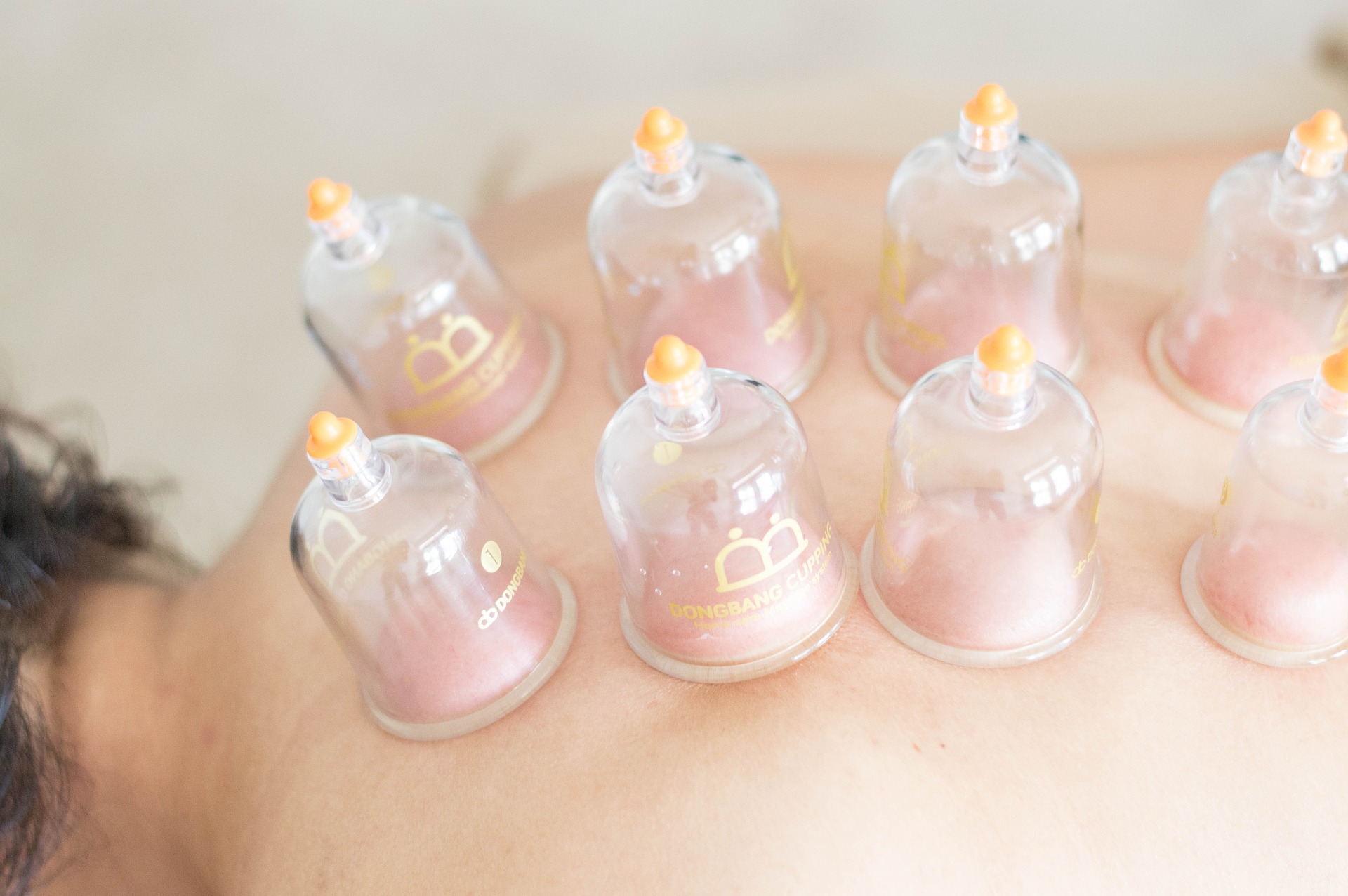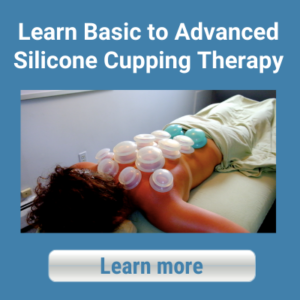Cupping Therapy, commonly referred to as Cupping, has been around for thousands of years, and developed over time from the original use of hollowed out animal horns to suck out and drain the toxins out of snakebites and skin lesions. Horns slowly evolved into bamboo cups, which were eventually replaced by glass.
The true origin of cupping still remains uncertain to this day. Some consider the Chinese to be responsible for cupping. The earliest recorded use of cupping from the famous alchemist and herbalist, Ge Hong (281-341 A.D.), which incorporates the popular saying “Acupuncture and cupping, more than half of the ills cured.”
Read more about the history of cupping
Traditional cupping, as practiced by acupuncturists, is called fire cupping, in which a ball of burning cotton is briefly placed inside a glass cup to heat the air inside (removing the oxygen). This creates a vacuum as it cools, and then cups are promptly placed on specific points on the body.
This ancient art of cupping has gotten a boost from several new studies that show it helps relieve a variety of painful conditions. But scientists say larger, more rigorous studies are needed.
Studies Show Cupping Is Helpful In Relieving Pain
Until recently, there was scant published evidence in favor of cupping for pain relief. Over the past three years, a handful of new studies have shown it helps relieve back, neck, carpal tunnel, and knee pain.
There are numerous theories on how cupping helps to relieve pain. Its widely believed that the suction on the skin increases blood flow to the area, resulting in a mild immune response. It is also thought that cupping helps to release fascia, which can pull on muscles causing pain or limited motion.
In one 40-person study of neck pain caused by computer use, “cupping therapy was effective in reducing pain,” says Tae-Hun Kim, a researcher at the Korea Institute of Oriental Medicine in Daejeon, South Korea.
The study, published online in the Fall of 2012 in the Journal of Occupational Health, found that six cupping sessions over two weeks were more effective on average in relieving pain than a heating pad—and the benefit lasted a month after treatment ended.
In another 40-person German study published in October 2012, cupping therapy significantly relieved knee arthritis pain compared with patients who received no treatment.
Since most of the studies on cupping lack a placebo control group, some scientists remain skeptical, unable to prove its efficacy.
My Two Cents
Since 2005, I’ve been practicing a modern application of traditional cupping called massage cupping (moving cups) and have witnessed the power of the negative pressure cupping.
I use the cups as an extension of my hands to mobilize tissue and fluids. With massage cupping, I’m able to utilize advanced bodywork techniques such as Myofascial Release and Lymphatic Drainage.
The flexibility of newer-style silicone cups (called Clearly Baguanfa) feel softer and less rigid on clients skin than glass. They make releasing rigid soft tissue adhesions so much easier than just my hands alone.
One thing is certain, which is people who love deep-tissue massage love cupping!
“After vigorous yard work and cleaning out my shed, my lower back was in trouble! I couldn’t turn to brush my teeth or lower myself to the sink the next morning…I was in spasm. Just 30 minutes of intense massage and cupping I was able to move, turn without pain! It loosened and has been fine since… I am so glad Morgan had an opening that day! This has happened before; back, shoulder, headache…Morgan is so well trained. He knows exactly what to do the last 15+ years!”
-Nancy M.
Read the Wall Street Journal article here.
Source: Wall Street Journal


